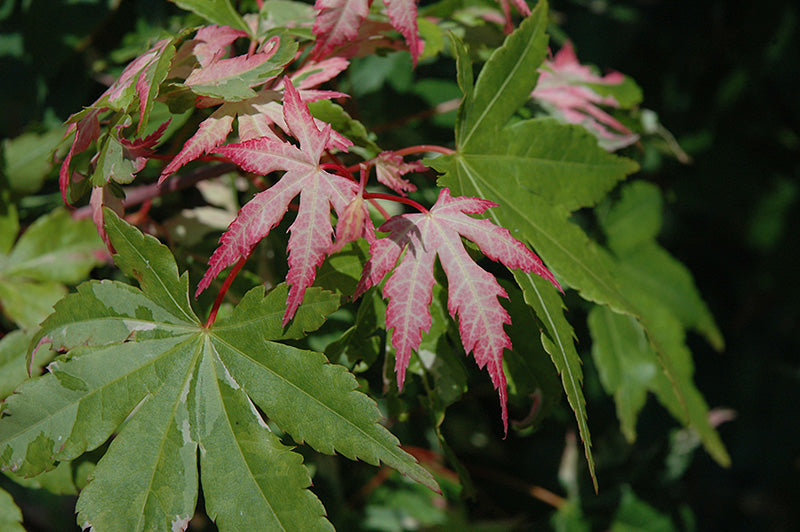Asahi Zuru Japanese Maple is primarily valued in the landscape or garden for its ornamental globe-shaped form. It has attractive creamy white-variegated green foliage with hints of rose which emerges rose in spring. The small lobed palmate leaves are highly ornamental and turn outstanding shades of red and orange in the fall.
Asahi Zuru Japanese Maple will grow to be about 12 feet tall at maturity, with a spread of 10 feet. It has a low canopy with a typical clearance of 2 feet from the ground, and is suitable for planting under power lines. It grows at a slow rate, and under ideal conditions can be expected to live for 60 years or more.
This tree does best in full sun to partial shade. You may want to keep it away from hot, dry locations that receive direct afternoon sun or which get reflected sunlight, such as against the south side of a white wall. It prefers to grow in average to moist conditions, and shouldn't be allowed to dry out. It is not particular as to soil pH, but grows best in rich soils. It is somewhat tolerant of urban pollution, and will benefit from being planted in a relatively sheltered location. Consider applying a thick mulch around the root zone in winter to protect it in exposed locations or colder microclimates. This is a selected variety of a species not originally from North America.
Details
Botanical Name
Acer palmatum 'Asahi Zuru'
Common Name
Asahi Zuru Japanese Maple
Hardiness Zone
- 7a
Appearance
Max Height
12 feet
Max Spread
10 feet
Plant Form
- Rounded
Foliage Colour
- White and Green with Hints of Rose
Fall Colour
- Red
- Orange
Flower Colour
Edible
Edible Component
Edible Harvest Period
Edible Use
Fruit Colour
Growing
Flowering Period
Moisture
Average to Moist
Sunlight
Full Sun to Partial Shade
Maintenance
Low
Deer Resistance
Get more information about this plant and others with our comprehensive plant finder tool.




